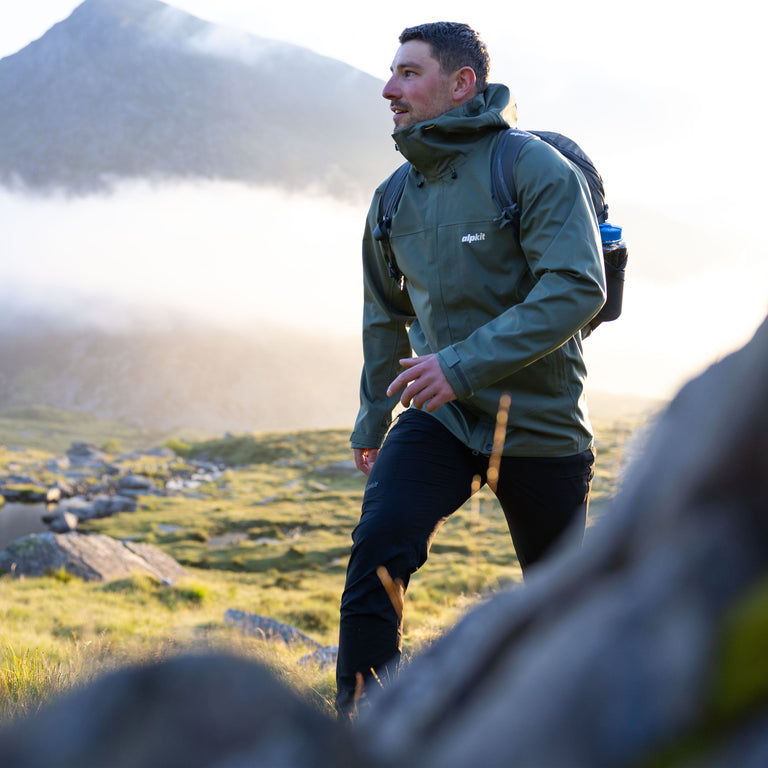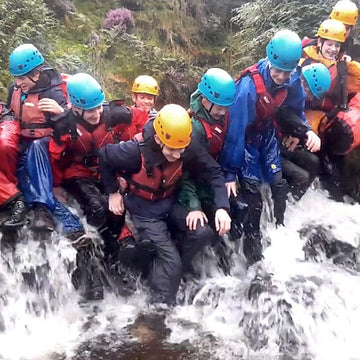
Explore Penyghent's peaks and scrambles, soaking in the scent of wild thyme. The smallest of the Yorkshire Three Peaks enchants every adventurer.
Of all the Yorkshire Three Peaks, Penyghent is the one I've been up most often. I suspect that might be true for a lot of folk as it's the smallest, and the shortest walk. That also means it's got a whole heap of memories and stories with it too. As far as I'm aware I've always been up it nose first which is, of course, the best way -- you feel like you are really in contact with the hill, literally on the second step where it's likely you'll have to use your hands to ascend. By scrambling standards there's nothing to worry about -- it's pretty straightforward -- but there is some exposure and therefore some excitement. It makes a small hill far more exciting.
I remember coming up here with mum one Christmas day. At the time we were self-employed greengrocers on Burnley market so the run up to Christmas was always incredibly hectic, with extra market days added to the normal routine, and all days at work becoming longer and harder. It did mean that Christmas Day was a day off and therefore a walking day to make up for those missed in the run up. We often went to Malham but this year the weather was clear and crisp and there was a bit of snow on the ground so we decided Penyghent was more to our liking. Also quite windy but southerly which isn't so bad on Penyghent -- you get blown up and over the hill before dropping down to descend. A little bit of snow on the rock steps meant there was a proper mountain feel to the day but without having had to ascend loads. We met one chap on top and chat turned, as it always does, to plans for the rest of the day. We were just going to head down the Pennine Way back to Horton (this story dates to about 1991 so no signs to guide you round the Three Peaks back then but the way to Horton was always obvious). He was going to head on over Plover Hill and then see where the day took him. He was just getting his map out when a gust of wind whipped it out of his hand and sent it far over Plover Hill and beyond. He looked dismayed, instantly realising his longer day was over. Well, as we knew where we were going and were staying on the main paths we gave him our map and off he went having exchanged addresses on a bit of paper so he could send it back.
Going back up the first time for the book was a very hot day. It was during that glorious sunny spell we had in May and June when we all feared that moorland fires were going to be rife all summer. It's also the last really settled spell of weather I can remember from this year. Anyway, it was warm. I'm from Lancashire and don't tend to thrive in warm and I was really towing this particular day. I've found on thar sort of day you can do two things: one -- wind yourself up about how crap you feel, how you're far too old/chunky/unfit/whatever your personal gripe is to be doing this sort of thing or two -- accept it's one of those days, slow down and enjoy what you can of the day. Look around at your immediate surroundings and enjoy them. Or more simply, have a word with yourself.
Because it was so warm that day the wild mountain thyme (there's your earworm) smelt amazing. It seemed to be everywhere, busily flowering and chucking out scent in the heat. I can't remember a day when I've been so aware of the fragrance on a hill. It was also a good day for views so much viewing was done. In between the first and second rock step there's a great view of Fountains and Darnbrook Fells. Fountains Fell is so called not because it's covered in ornamental Victorian designs gushing water but because it was owned by Fountains Abbey. That's about 30 miles away as the crow flies. Now, you may be thinking, quite rightly, that monastic foundations should be holding land close to their main base. Well, over the years definitions got stretched a little as the monasteries grew in power. Originally land was supposed to be within a day's walk of the monastery. Then that was a day's walk on a horse. After that, it was much more of a free for all which is how the monasteries ended up holding so much land and were so rich and powerful. The had a fair effect on the landscapes they controlled too -- there are many roads in the Dales which date to the monasteries moving goods around the landscape. Jedburgh Abbey had a horse stud around Horton too.
After all this musing I was about ready for the second step. The first step on Penyghent is a limestone band but the second is a gritty sandstone. All of the Three Peaks are made of layers of sedimentary rock laid down in the Carboniferous era, changing between limestone and sandstone. There's also thin beds of shale but they erode out very quickly once exposed so are harder to spot. Together they are known as the Yoredale series. On Penyghent in particular you get to appreciate this bedding as the rocks under your hands on the second step feel different. After the second step there's a series of flagstones all the way to the summit. This used to be a badly eroded section of trail so it's nice to see it contained to one small passage. The flags are clear reused -- you can amuse yourself by imagining what they were in a previous life although, probably to the disappointment of the young gentlemen pondering this very point behind me that day, they are not gravestones.
Thankfully on top of the hill there are shelters and a dry stone wall meaning you can find shade and shelter whichever direction the weather is coming from. I slumped in the shade for a while and drank a lot of water.
Normally on days where you feel a bit off you suddenly feel great going downhill. Even that didn't happen on this day so time for more nosying at bits off the path. First up was the limestone cliffs just at the sharp bend of the descent path. Yet more mountain thyme crushed underfoot releasing that amazing smell. I have a vague recollection of shimmying up between the pinnacle and the cliff once upon a time but I can't remember why or when now. It all looks a little bit loose these days but it's well worth having a gawp at.
Then Hunt Pot which is just off the path but far enough off the path it's generally quiet. It drops 20-odd metres, so don't get too giddy about getting close to the slit entrance. It's a great spot to sit and be mesmerised by the disappearing water though, and you can fill your bottle. The other hole well worth going to see on this round is Hull Pot which is a little off route -- when you meet the bridleway to Horton head up the way instead of down and follow it to the massive hole in the ground ahead of you. It seems to be a collapsed cavern, and you'll be able to spot water going into the pot usually part way down. When it's very wet and the underground passages are flooded, water comes directly over the top edge. When it's really, really wet, the hole will fill. I've never seen it like that -- it's a rare enough occurrence to make the news. Normally I like to wander up stream to see where the water is sinking. On this particular day it seemed right to have a paddle too. The water was running over a slab of rock , not to any great depth at this point, so it was delightfully warm.
Heading back into Horton you are on a walled track, very typical of the Dales. It's worth keeping an eye on the old river bed on the left-hand side of the track as you descend for dry waterfalls and other limestone goodies. It really is a cracking round of a splendid little hill. And that smell of thyme is still with me.

![Definition [Mens]](http://us.alpkit.com/cdn/shop/files/Definition-men-2.jpg?v=1764356982&width=768)

![Definition [Womens]](http://us.alpkit.com/cdn/shop/files/Definition-women-3.jpg?v=1764357034&width=768)
![Balance [Mens]](http://us.alpkit.com/cdn/shop/files/balance-mens-2025-reef.jpg?v=1767293705&width=768)
![Balance [Mens]](http://us.alpkit.com/cdn/shop/files/Balance-mens-1.jpg?v=1767293705&width=768)
![Balance [Womens]](http://us.alpkit.com/cdn/shop/files/balance-womens-2025-black.jpg?v=1767293772&width=768)
![Balance [Womens]](http://us.alpkit.com/cdn/shop/files/Balance-womens-3.jpg?v=1767293772&width=768)


![Fortitude [Womens]](http://us.alpkit.com/cdn/shop/files/fortitude-womens-2025-alder.jpg?v=1766603014&width=768)









![Gravitas [Mens]](http://us.alpkit.com/cdn/shop/files/mens-gravitas-2025-chilli.jpg?v=1765566103&width=768)
![Gravitas [Mens]](http://us.alpkit.com/cdn/shop/files/gravitas-location-1-RETOUCH.jpg?v=1765566103&width=768)
![Gravitas [Womens]](http://us.alpkit.com/cdn/shop/files/womens-gravitas-reef_2d13b155-8b33-426c-b830-bc1af1ad56df.jpg?v=1764270047&width=768)

















